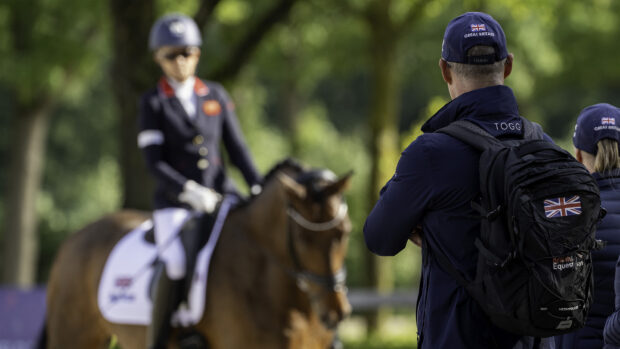I admit, I have a real soft spot for para dressage. The first championship I ever reported for H&H was the Rio Paralympics and even since then I’ve been fascinated by the sport. So far, the para dressage at the World Equestrian Games in Tryon has kept me on the edge of my seat — and we still have the team competition come, in which Britain will be pushed to the very edge as they attempt to maintain their unbeaten run.
But it frustrates me that para dressage often suffers from empty seats at competitions, and that world champions can often go unnoticed by the non-specialist media. It can be a tricky sport to understand and follow, with athletes split into five grades according to their disability, and the individual, team and freestyle championships to make sense of. But those who choose not to get involved are missing out — especially the media. Para dressage is the dream sport for a journalist — our job is to hunt out the very best stories, and convey the drama of the action, and here is a discipline absolutely bursting at the seams with drama, emotion and characterful competitors.
You’re spoilt for choice when it comes to great stories — from the tragedies many riders have suffered, to the triumph over adversity and almighty challenges faced when it comes to riding and competing on the world stage. Para dressage receives little funding in comparison to other horse sport, and so riders are often battling against the odds just to get to a championship, doing everything possible to be able to fulfill their passion.

Hong Kong’s Pui Ting Natasha Tse with Baxo at WEG 2018
And then there are the horses. At this level of the sport, the field is full of top quality horses, in every grade, with temperaments to die for and paces that wouldn’t look out of place in a grand prix. For a para rider, finding the perfect dancing partner is such a challenge, not to mention training the horse to respond solely to weight or voice aids, and maintain their balance and rhythm no matter how their rider’s body moves in the saddle. It results in incredible and unmistakable harmony between horse and rider.
The tests are far from easy, too — imagine performing a perfect half pirouette without the use of your legs, or nailing a four-loop serpentine without your sight. Then there’s the unpredictability that comes with having a disability — most of us are lucky enough to be able to predict how our bodies will feel and perform on a given day, but for a para rider, they have to be able to adjust to whatever the conditions and their body might suddenly throw at them in the ring. Watching someone with a disability perform technical movements better than most able-bodied riders can never fails to impress.
Article continues below…
You might also be interested in:

Tales from Tryon: ‘I had lost my legs but they lifted me back on board my horse’
Meet the brave Brazilian rider who couldn't hold back his emotion when he secured his first medal.

‘This means such a lot’: Britain’s Sophie Wells crowned world champion in Tryon
Britain's Sophie Wells claims gold on day one of the para dressage in Tryon

Polly Bryan’s WEG blog: ‘There were many things I expected from my first WEG — Hurricane Florence was not one of them’
H&H's dressage editor and WEG rookie reflects on a dramatic first week in Tryon
I always come away from interviews with para riders feeling hugely inspired, with a valuable dose of perspective on life, and these World Championships are no exception. It’s only day two of the para competition here and I’ve already cried three times. These are people who have been through things most of us are lucky enough not even to be able to imagine, yet are overflowing with excitement, purpose and joy. Their horses and this sport means everything to both the riders and their enormously important support teams, and the para community is one big happy family, that I feel extremely privileged to have an insight into. That’s not to say it isn’t extremely competitive — every rider enters the arena with their game face on, desperate to get on that podium, and it makes for thrilling sport. Just with an extra dose of elation and emotion.
Horse & Hound has two journalists and a photographer in Tryon for WEG. Keep up to date with all the news on horseandhound.co.uk and in the magazine issues dated 20 and 27 September.




